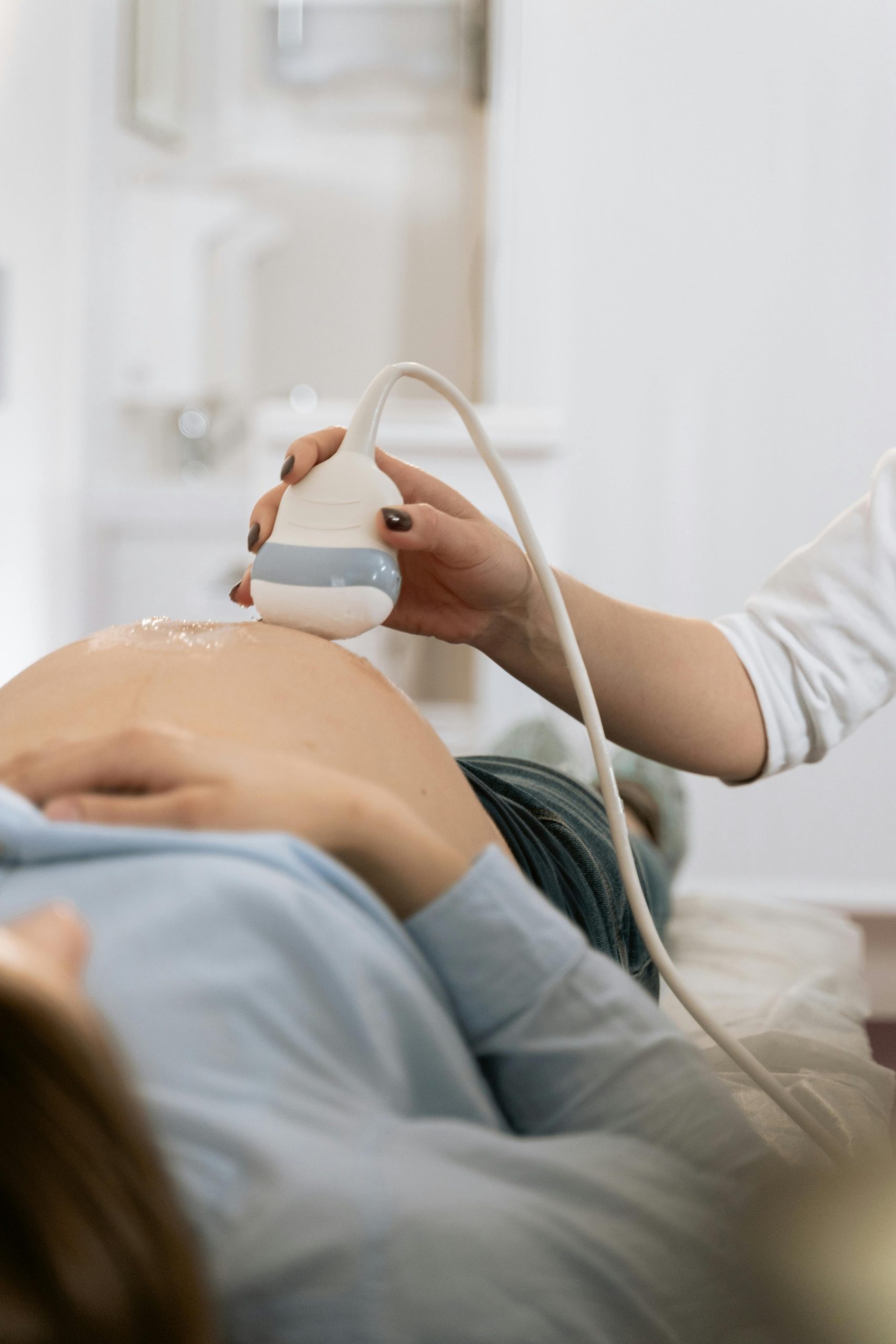
Sono-Breech
The Sono-breech study is a multi-centre study taking place in at least 13 hospitals across the UK, aiming to determine the diagnostic accuracy of handheld ultrasound at 36-weeks of gestation to determine fetal presentation.
Case Studies
Here are two case studies about two of our PPIE panel members’ experiences of breech birth and the impact they think the Sono-breech study could have on pregnancy care and outcomes.
Sarah Fisher
I’m a mum of three children, including twins, which were all born vaginally. During my second and twin pregnancy, I had a planned breech vaginal birth of my second-born twin, which was a really positive experience.
Due to the multiple pregnancy I was having more frequent scans and as a result, I was fortunate that in good time before my due date, when discussions and decision-making about my birth preferences were underway, one of my babies was identified as breech. It was ‘twin 2’ that was breech. Twin 1 (ie. the ‘presenting twin’ closest to the cervix) who would be born first was head down. My breech twin 2 turned out to be my daughter, and twin 1 my son, and they remained in these positions throughout the pregnancy and labour.
I was grateful for the information and advanced notice about their positioning because it helped me to plan and make informed decisions about their births. I was keen to have a physiological twin birth, and the head down position of my first twin made this easier and safer. Due to the increased risk of complications for multiple births, NICE guidance doesn’t suggest attempting vaginal birth of twins unless the first twin is head down, but if that is the case as it was for me, breech presentation of twin 2 per se isn’t viewed as problematic.
My twin birth went smoothly and to plan with my son born vaginally head down, followed by my daughter, born breech little over an hour later. Their good births got the three of us off to a great start, for which I am extremely grateful. That description makes it sound simpler than it was in practice, but elsewhere you can read further information about the birth and the more complex antenatal journey I had to make and exercise my twin birth decisions and preferences.*
As a mum of twins, my breech birth experience puts me in a different position to most women with breech babies and I wouldn’t have qualified for the Sono-breech trial. But having had the fortune of my daughter’s breech position being identified before labour began, I can speak to the great value of that and the difference it makes. It allowed me the time and opportunity to learn about and explore my birth options, weigh up the potential pros and cons of trying for a breech birth, and to come to a decision which I felt was right for myself and my babies based on our individual circumstances. I did this not only in consultation with different health professionals but also informed by my own research, including reaching out to others with experience of breech and / or vaginal twin births. If I had instead learnt that my baby was breech during labour, or even very late on in my pregnancy, I know I would have found that very stressful, which would certainly have affected my birth experience and potentially the outcomes.
As someone who is passionate about ensuring that women have access to evidence-based information and opportunities to make their own informed choices and decisions about birth, I feel privileged to be able to draw on my lived experience to inform and support this study which has so much potential to benefit pregnant women and their babies.
*Fisher, S. (2023) A quest for a physiological twin birth. The Practising Midwife, 26 (11). pp.31-34. Available at: https://www.all4maternity.com/a-quest-for-a-physiological-twin-birth/
Leeann Jones
1st child/pregnancy.
Midwifery lead pregnancy no complications until I attended my final community antenatal appointment where I was examined by a different midwife to usual and the midwife suspected baby was breech (previous examinations I had been assured baby was head down and engaged) being full term I was sent immediately to the hospital for a scan where it was confirmed baby was breech. Following an assessment, I was offered an ECV that day at the Heath, baby was turned successfully, and I went on to have a vaginal birth (forceps intervention was required and baby born was unresponsive due to the cord wrapped around neck and a long labour but fully recovered quickly).
2nd child/pregnancy
Again, midwifery lead and no complications although following my first ‘experience’ I did express concerns over the antenatal consultations and asked several times for a presentation scan to which I was denied as they were confident baby was head down. Around my 37/38 week check baby/bump was measuring small so I was sent to the Heath hospital for a growth scan which revealed baby was in fact breech. I was encouraged to go ahead with a breech birth, I was also offered an ECV – but due to the pure discomfort of the last I declined, I also wasn’t comfortable go ahead with a breech birth due to the risk factors which had been explained to me in my first pregnancy. So, I had an elected C Section the following week.
As far as birthing plans goes, I was very open minded but given the non-complicated pregnancies opted for limited assistance in the maternity unit with the use of a pool, but upon reflection now, I am grateful of the care I received and safe delivery of my babies, however this was somewhat mapped by the late detection of the breech position.
Had I have been able to have a PoCUS scan at 36 with my community midwife I would have had more time to discuss/consider my birthing options.

